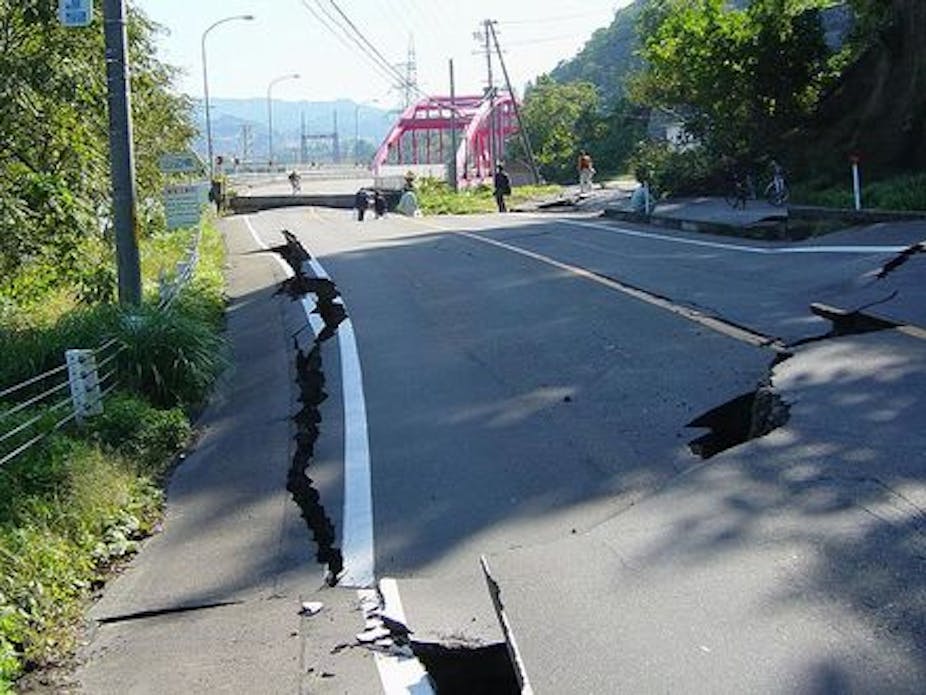Since the 2004 Sumatra earthquake, there have been several major events, and a large number of magnitude-8 earthquakes – a cluster, it could be said, of large earthquakes.
The last time we saw this was around 1960, the only other obvious cluster over the last 100 years. That’s the time interval for which we have this type of information – before 100 years ago, we just don’t know.
We can definitely say that there seems to be periods in which we have a few more of these big events, and times when we don’t have very many.
Why this should be the case is something we’re currently trying to understand. And if these clusters are real – which seems apparent – we want to understand the reasons behind them.
Clustering, or triggering, occurs on different length scales. We’ve seen cases where, after a big event somewhere, over the next five, 10 or 20 years adjacent sections of the same major fault systems will have large earthquakes – it’s as if there’s a sort of unzipping of a major fault.
We understand the mechanical reasons behind this. As one earthquake goes, the next stretch of faultline gets loaded to breaking point, and at some stage it lets go, and so on. This is well known for regional behaviour.
What we don’t understand, but would like to, is how (and if) this translates across much larger distances, whether there is, in fact, a connection between the 2004 Sumatra earthquake, Chile’s magnitude-8.8 earthquake last year, and the recent massive earthquake in Japan.
Is there indeed a triggering mechanism? Or is this all down to chance? With only 100 years of data to study, we just don’t know.
My own view? I’m an agnostic.
Professor Kevin Furlong is a key speaker at the public lecture What’s With All These Earthquakes? at Melbourne University this evening.

